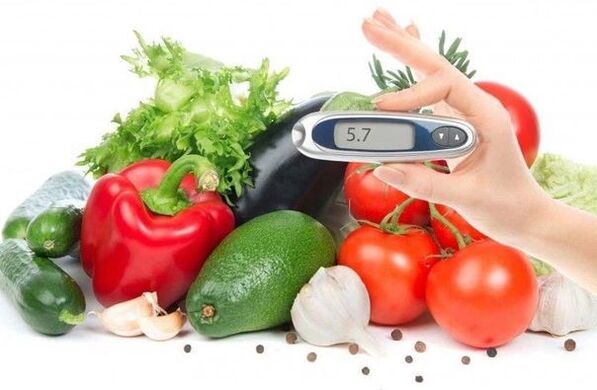
Diabetes is a very serious and dangerous disease that requires constant treatment. Along with drug treatment, the patient should lead a healthy lifestyle, give up addictions and play sports. It is equally important to know what you can eat with diabetes, and which products you should refuse outright.
If your state of health is significantly impaired, your mood is bad, constant and moreover, thirst does not stop, hangovers, frequent urination, itchy skin, especially in the area of the feet and groin, youshould contact your doctor immediately. endocrinologist and undergo an examination. These symptoms signal the development of diabetes.
The disease is certainly dangerous and severe, but not a saying. Many people live with illness. To normalize health, maintain normal blood sugar levels and eliminate unpleasant symptoms, you should follow a special diet and know what you can eat when you have diabetes.
Pathology can develop in both adults and children. Usually the disease is diagnosed in pregnant women. With proper treatment and a healthy diet, the disease can be controlled.
IT IS IMPORTANT
Non-compliance with medical recommendations, alcohol abuse, smoking, eating harmful foods - all this harms the body and is fraught with serious consequences. Diet therapy is indicated for any kind of pathology.
What can you drink with diabetes?
Most patients try to keep track of their diet. They don't eat junk food and try to make food as healthy and balanced as possible. But not everyone can keep track of what they've been drinking. Diabetics should not drink alcoholic beverages, store-bought juices, strong teas, kvass, sweetened sodas.
If you want to drink, you should prioritize the following drinks:
- non-carbonated mineral water or purified water;
- unsweetened fruit juices;
- jelly;
- compilation;
- weak teas;
- tea;
- herbal decoction and infusion;
- freshly squeezed juice (but only diluted);
- skimmed dairy products.
Doctors do not recommend patients to drink coffee. But scientists have proven that coffee is rich in useful and necessary substances, including antioxidants that help prevent the growth of tumors. They are rich in cereals and linoleic acid, which prevents the development of heart attacks, strokes and other pathologies of the cardiovascular system. So you can drink coffee with diabetes, the main one is natural and sugar-free coffee.
The basic rules of healthy eating
Every diabetic, without exception, should know what to eat when suffering from diabetes. Eating all the food in a row can deplete your overall health.
Any diet, including diabetes, has its own characteristics and rules.
Diet therapy is said to:
- limit the consumption of carbohydrate products;
- reduce calorie intake;
- the use of fortified foods;
- five to six meals a day;
- meals at the same time;
- natural vitamin supplements - vegetables and fruits (except sweet ones, especially persimmons and dates);
- eat small meals;
- exclude long intervals between meals;
- compiling menus taking into account the product's GI;
- reduce salt intake;
- refuse to eat greasy, spicy, fried foods;
- refuse the use of alcohol and sweetened sodas, as well as convenience and fast food;
- replace sugar with natural sweeteners: fructose, sorbitol, etc. v . . . ;
- the use of boiled, baked and steamed foods.

The right diet is the key to good health
Diabetics, regardless of the type of disease, should follow a suitable and healthy diet:
- To continuously maintain insulin levels, you need to eat a full breakfast.
- Every meal should start with a vegetable salad. This contributes to the normalization of metabolism and weight regulation.
- The last meal should take place no later than three hours before bedtime.
- The food you eat should be at a comfortable temperature. Diabetics can eat foods that are moderately warm and cool.
- The liquid can be taken half an hour before a meal or after 30 minutes. Do not drink water or juice with meals.
- It is important to follow the routine. Eating 5-6 times a day helps prevent a sharp rise in blood sugar levels.
- The diet should be rich in low-fat fish, low-fat dairy products, vegetables and fruits, whole grains.
- Diabetics should give up sugar and any products containing it.
- The optimal daily calorie content is 2400 kcal.
- Monitoring the chemical composition of dishes is also important. The proportion of complex carbohydrates in the daily diet is 50%, protein - 20%, fat - 30%.
- It is recommended to drink 1. 5 liters of purified water or non-carbonated mineral water per day.
GI (glycemic index) - what is it?
Each product has its own GI. Otherwise it's called "bread unit" - XE. And if the nutritional value determines how much useful substances will be converted into energy for the body, then the GI is an indicator of the digestibility of carbohydrate products. It indicates how quickly carbohydrate products are absorbed, while also raising blood sugar.
What can diabetics eat while following the diet and table number 9
Many patients when they hear the word "diet" treat it as a saying. They believe that their diet will be limited to a minimum. In fact, everything is far from it. Diet therapy for an illness means restricting calories, consuming complex carbohydrates, and eliminating simple carbohydrates. Food can be both healing and delicious. You just need to know what diabetics can eat.
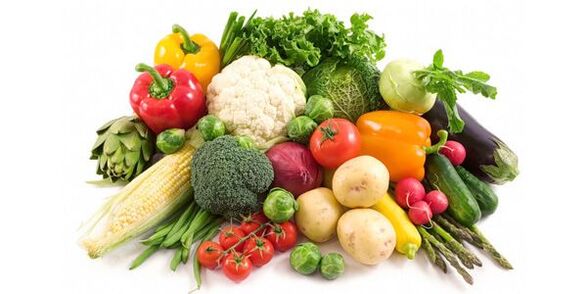
Eating the right foods will help control weight and maintain normal insulin levels.
Patients are allowed to use the following products:
- Of bread. Preferably rye bread or diabetic products. The daily norm is 300 g. The use of cereals, whole grains and "Borodino" bread is also allowed.
- Soup. It is desirable that the first dishes be cooked on vegetable broth.
- Lean meat (veal, beef, rabbit, chicken) and fish: perch, carp, cod. Any method of preparation, except frying only.
- Eggs and scrambled eggs. You can eat no more than one egg per day. Overuse of this product may increase cholesterol levels.
- Dairy products (low-fat milk, cheese, kefir, curd, fermented baked milk, natural yogurt).
- Cheese (unsalted and low-fat).
- Berries: grapefruit, raspberry, apple, kiwi. Consuming them not only helps increase sugar levels, but also helps lower harmful cholesterol levels.
- Vegetables: cabbage, tomatoes, cucumbers, radishes, greens.
- Honey (limited).
- Beverages: juices, herbal preparations, mineral water.
All these products can be eaten by diabetics. But the main thing is to observe the measure in everything. Food should not be greasy. You are also not allowed to drink alcohol.
The product is allowed for people with insulin dependent forms
Pathology of the first type, or insulin-dependent diabetes, is characterized by severe symptoms, an acute episode and accompanied by increased appetite. In addition to using insulin, it's also important to know what diabetics can eat. A well-formulated diet is the best way to maintain health and well-being.
The diet of patients with type 1 diabetes is similar to that of patients with type 2 diabetes. It is allowed to use: non-carbonated mineral water, low-fat seafood and fish, oatmeal and buckwheat, vegetables, low-fat dairy products, hard-boiled eggs, diet meats.
IT IS IMPORTANT
If you have diabetes, you need to detox your body for at least a month and a half, and follow a buckwheat or kefir diet once a week. This will contribute to the regulation of body weight and prevent complications of the disease.
Table 9 for pathology
Patients are usually prescribed to adhere to diet chart number 9. The diet assumes six meals a day, excluding fats, fried foods, spicy foods, smoked meats, salty foods, and sweets. . The energy value of the daily diet should not exceed 2500 kcal. Diabetics can eat food cooked in any way, except fried.
What not to do with diabetes: allowed and prohibited foods, sample menus
Every person with a serious illness should know what not to do with diabetes. The misuse of harmful products will lead to quality deterioration.
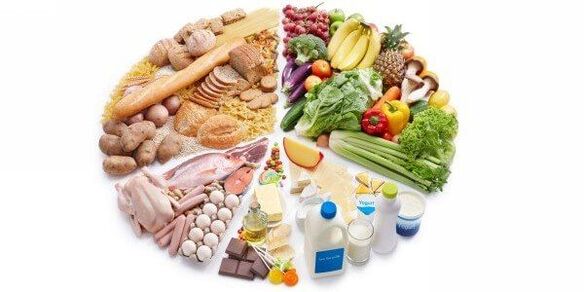
Listed products should be removed:
- Sahara. Should be replaced with sweetener.
- Bake. This type of food is highly discouraged. In addition to being rich in sugar, they also contain a lot of calories, which is not good for blood sugar.
- Fatty meat and fish products.
- Smoked and canned foods. These products have a high glycemic index.
- Animal fat, mayonnaise.
- Milk has a high percentage of fat.
- Tapioca and cereal products, as well as pasta.
- Vegetable. You can't eat some vegetables when you have diabetes, but if the disease doesn't improve, you should limit them as much as possible: potatoes, fried zucchini.
- Sweet fruit.
- Beverages: sweetened soda, concentrated or store-bought fruit juice, mixed water, concentrated black tea.
- Snacks, nuts, chips.
- Candy. With any type of diabetes, especially gestational diabetes, the use of ice cream, jam, milk chocolate is prohibited.
- Acoholic drink.
Allowed and Prohibited Products:
Proper nutrition, along with the use of insulin, is the key to good health. Adhere to the diet, as well as the use of drugs, the patient should be for life. This is the only way to maintain normal blood sugar levels. What to eat and what not to eat with diabetes.
Allowed to eat:
- purified water or mineral water;
- weak tea, coffee;
- mushroom;
- green bean;
- radish;
- radish;
- radish;
- string bean;
- green vegetables;
- carrot;
- radish;
- eggplant;
- pepper;
- cabbage;
- Cucumber;
- tomato.
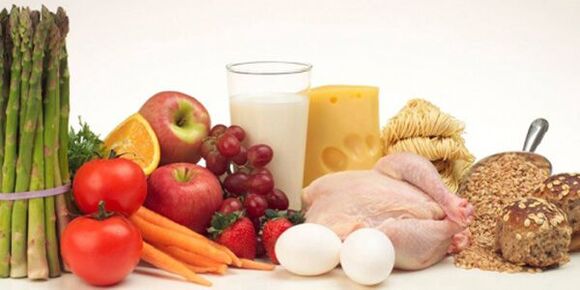
Allowed to use:
- egg;
- Berry;
- fruit;
- soup;
- the disc disease;
- of bread;
- legumes (peas, beans, lentils);
- The potatoes;
- Honey;
- low-fat cheese;
- low-fat dairy products;
- low-fat boiled sausage;
- meat and fish products.
It is forbidden to eat:
- acoholic drink;
- grape;
- banana;
- peach;
- day;
- sweets (ice cream, jam, lollipops, cookies);
- Sahara;
- Seeds;
- Canned food;
- smoked products and sausages;
- fatty meat and fish products;
- fatty dairy products;
- Animal fat.
How to replace harmful products
The patient is forbidden to eat high-calorie foods, since such products provoke the progression of the disease and aggravate the effect of the drug.
Harmful products can be replaced by useful products that are suitable in composition:
- White bread can be replaced with rye flour products.
- Sweets and desserts - berries and desserts for diabetics.
- Animal fats are vegetable fats.
- Fatty meat products and cheese - low-fat products, avocado.
- Ice cream is a low-fat dairy product.
- Ice cream - hard cheeses, seafood, legumes.
- Beer - dairy products, beef, eggs.
- Sweet soda - beets, carrots, legumes.
- Sausage is a dairy product.
Approximate weekly menu
You can make your own menu for each day or even for the whole week, weighing the possible and the impossible with diabetes. Below is a sample menu for the week.
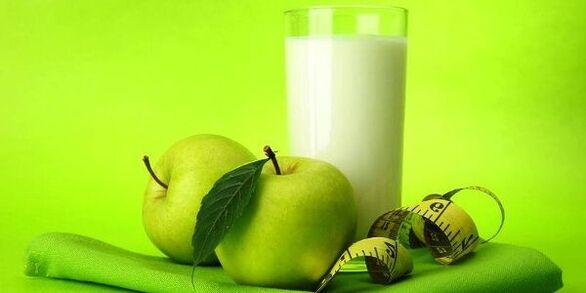
The first day.
- Breakfast: cucumber and cabbage salad, oatmeal, weak tea.
- Snack: apple or kefir.
- Lunch: vegetable soup, stewed zucchini, soup.
- Snack: cheese casserole.
- Dinner: buckwheat porridge, boiled chicken fillet, juice.
The second day.
- Breakfast: pumpkin milk porridge, jelly.
- Snack: biscuits.
- Lunch: lean borscht, millet porridge with grilled pollock fillet, green tea.
- Snack: curd.
- Dinner: stewed squash, kefir.
The third day.
- Breakfast: boiled eggs, cheese sandwich, coffee.
- Snack: baked apple.
- Lunch: fish soup, buckwheat porridge, steamed chicken meatballs, tomato juice.
- Snack: orange.
- Dinner: milk rice porridge, boiled shrimp, fermented baked milk.
The forth day.
- Breakfast: scrambled eggs, cheese sandwich, tea.
- Snack: salad with tomatoes, cucumbers and bell peppers.
- Lunch: cabbage soup, grilled fish, chips.
- Snack: raspberry jelly.
- Dinner: boiled turkey, tomato juice.
Thursday.
- Breakfast: baked pumpkin, apple.
- Snack: an apple.
- Lunch: mushroom soup, oatmeal, carrot juice.
- Snack: kefir.
- Dinner: lazy cabbage rolls, curd.
The sixth day.
- Breakfast: cheese, coffee.
- Snack: apple juice and cookies.
- Lunch: soup with chicken pieces and buckwheat, grilled hake, french fries.
- Snack: vegetable salad.
- Dinner: steamed beef cutlet, oatmeal, carrot juice.
Saturday.
- Breakfast: pumpkin porridge, green tea.
- Snack: any fruit allowed.
- Lunch: soup with rice, chili stuffed with chicken, tomato juice.
- Snack: vegetable salad, cheese sandwich.
- Dinner: buckwheat porridge, stewed cabbage, kefir.
There can be six meals. But the main thing is that the last meal should not be later than three hours before bedtime.
Diet therapy for diabetes is not difficult, but necessary. The list of allowed products is quite large, so the diet will not be monotonous. The main thing to understand is that a healthy diet in case of illness is the key to good health and maintaining normal blood sugar levels.














































































